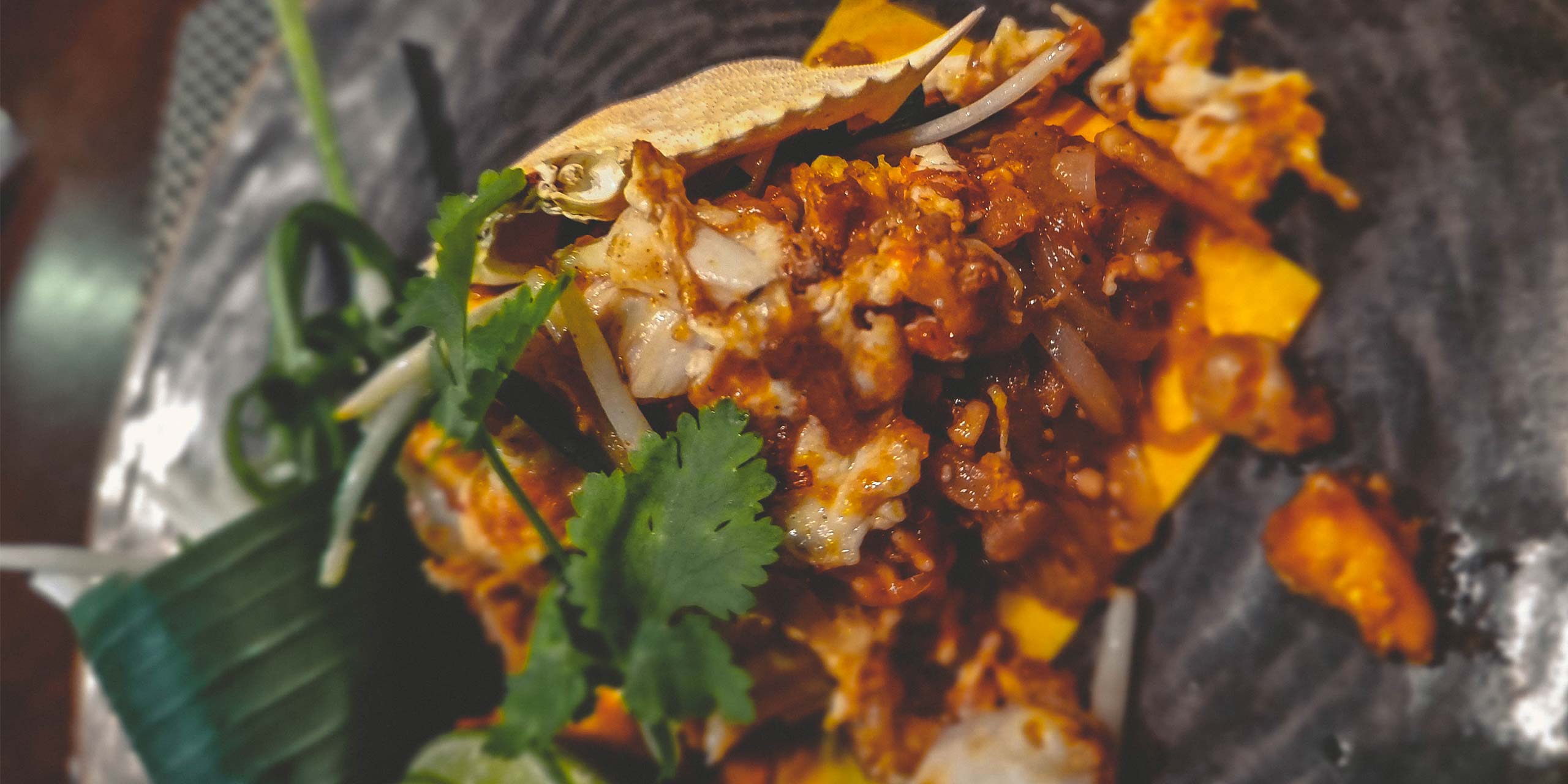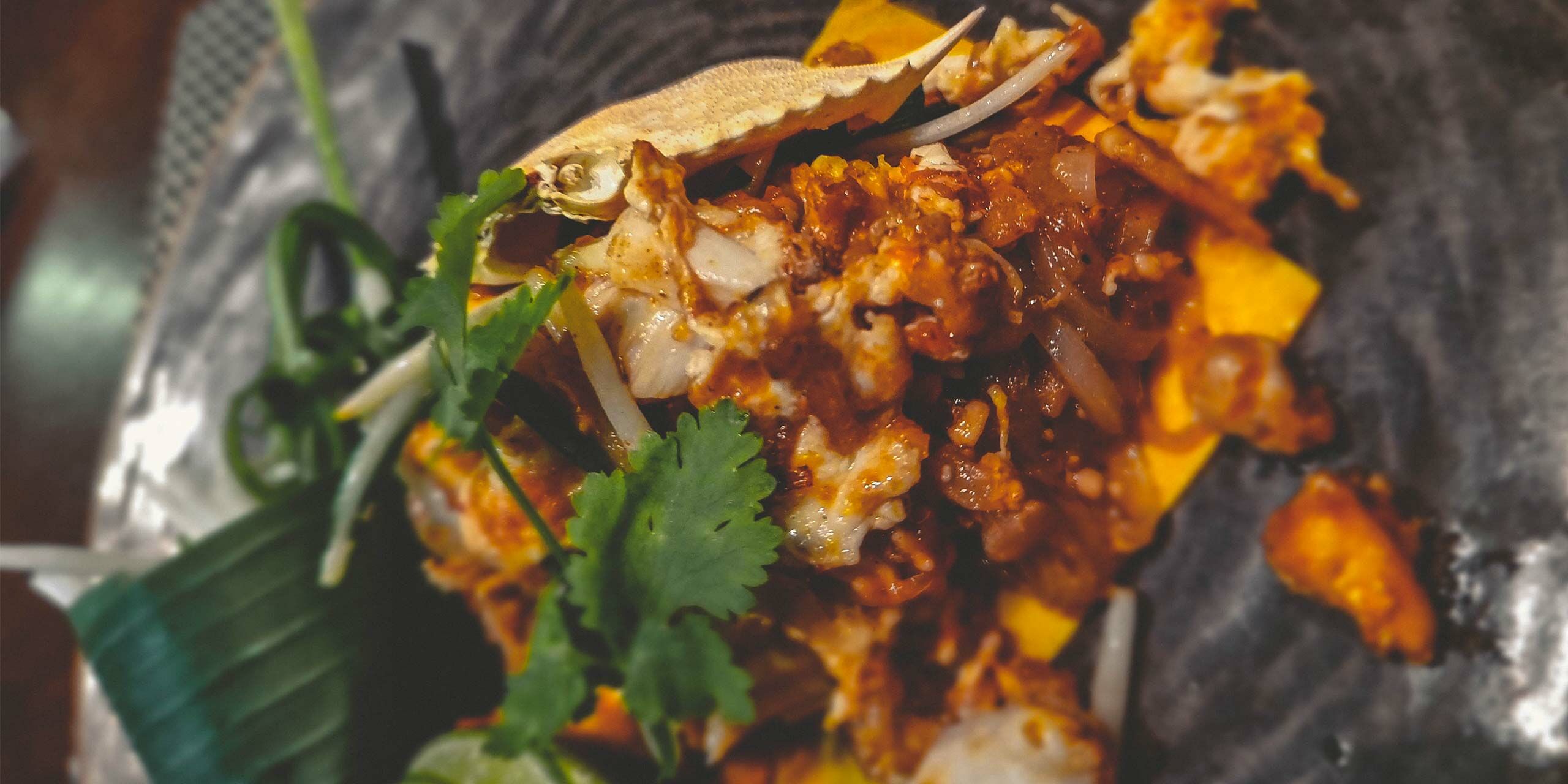
The Michelin guide first came to Bangkok in 2017, and among the first Thai restaurants accepted into such august company was Saneh Jaan.
Away from the gunge and Old World swirl of the khlongs and culture of the Chaophraya River and Chinatown, Saneh Jaan, a word referring to an auspicious Thai dessert, is found on Witthayu, which, for locals is synonymous with the posh diplomat district, including the massive US Embassy.
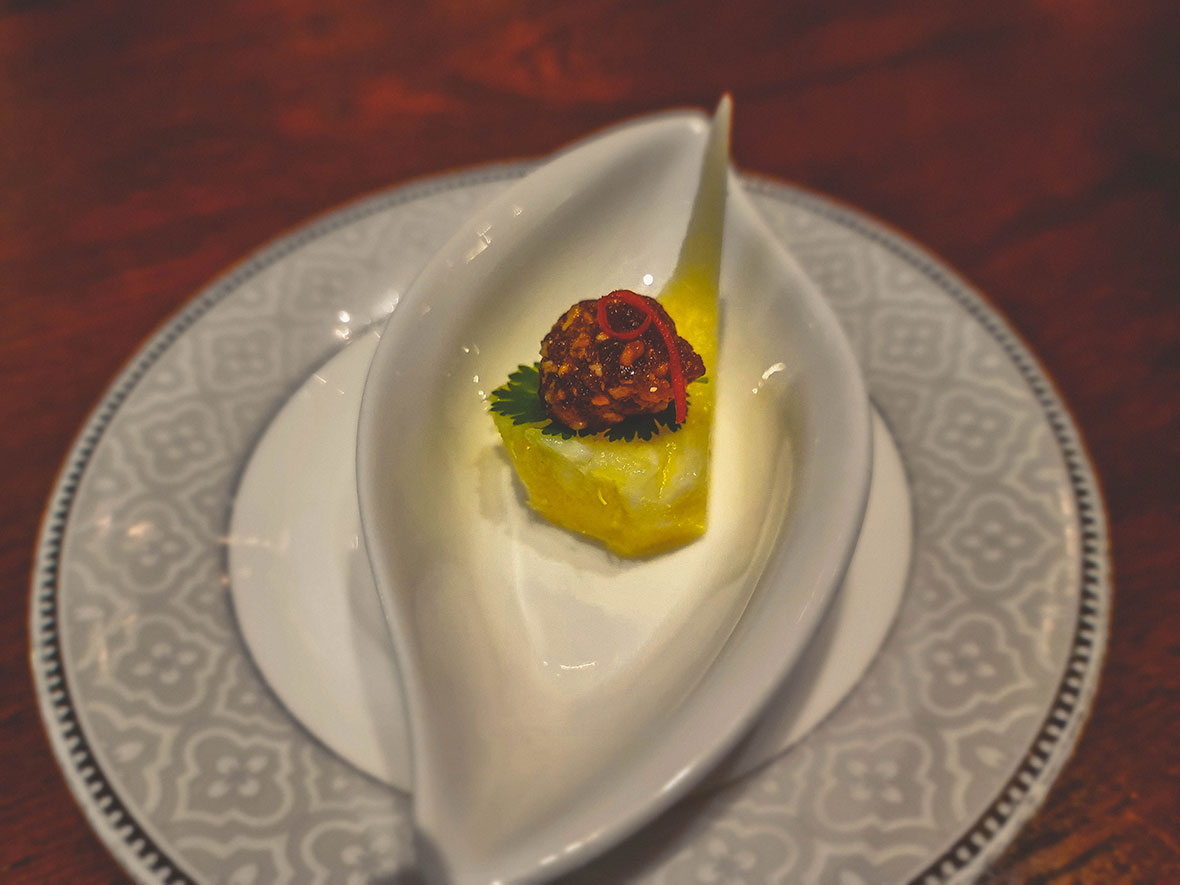
Saneh Jaan is found just off the main road above Lumpini Park, which, for the uninitiated, gives the odd before-dinner option of seeing some of the harmless and sadly unappreciated water monitor lizards crawling through the city’s largest major park.
Retaining its Michelin star thrice now, Saneh Jaan is — and has been — an institution, a must try for fine dining foodies making their way through the wildest city in Southeast Asia. Covid-19, however, put a damper on Saneh Jaan just like every other restaurant in Bangkok, but for more than a week now, as Bangkok prepares to welcome international travelers again in October, Saneh Jaan is back and making its signature Thai cuisine with that certain special flair.
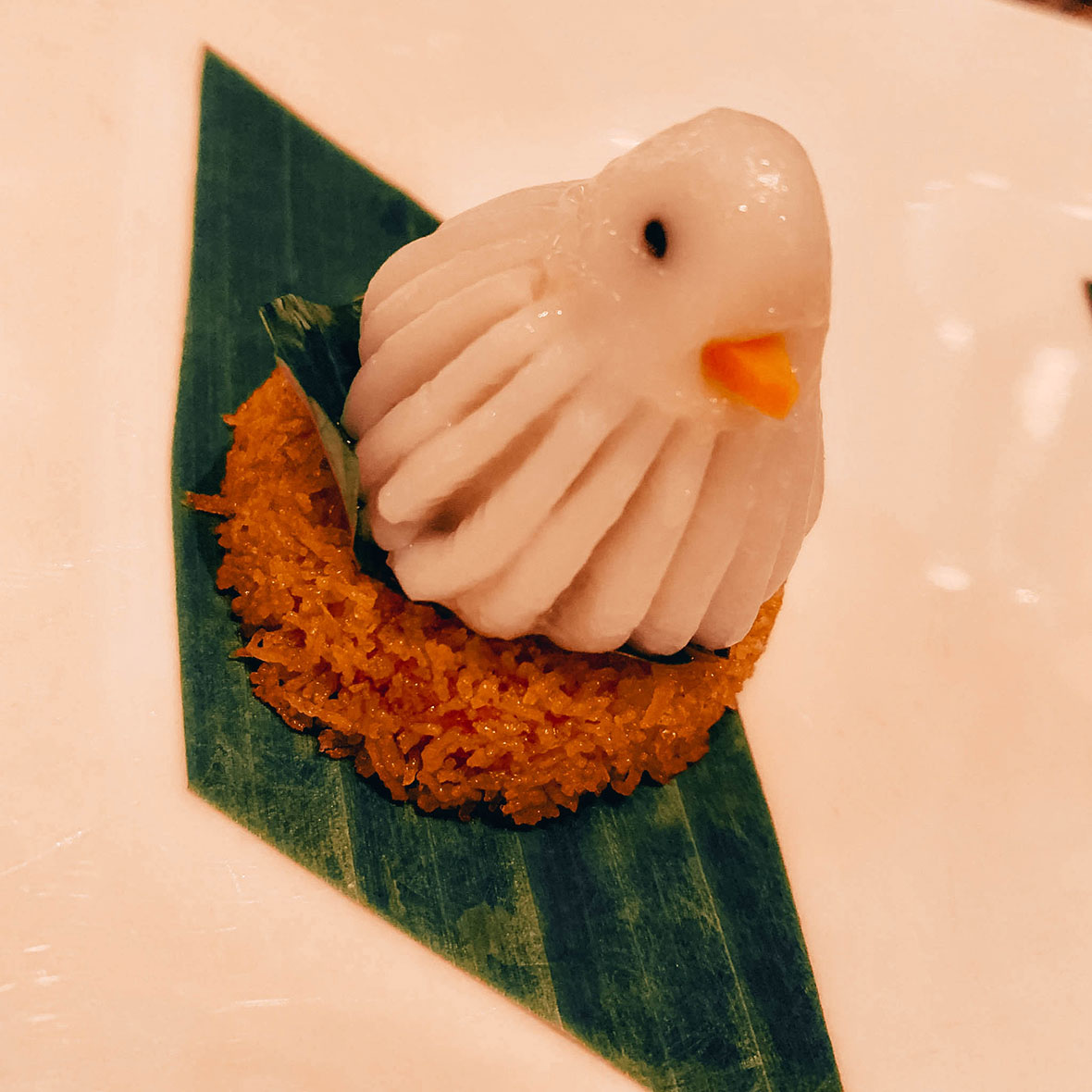
Like many traditional Thai cuisine restaurants of a certain caliber — including nahm down the road at Como Metropolitan — Saneh Jaan boasts a royal lineage to its fare, but that’s not to say it doesn’t boast a certain creativity. The Thai flavors at Saneh Jaan are delicate but familiar. The decor is understated and puts one in mind of a theater dinner, but, in this age of Covid somewhat abandoned, as if you’re visiting for a secret little matinee.
Thailand is set to open to international travelers in less than a week, but, right now, the capital still labors under a booze ban — an irritating panacea for the authorities in force for a number of holidays as well as the culprit for any number of social ill. In short, no wine pairing. However, the 7-course “The Harmonious of Siam” tasting menu was still, well, on the menu.
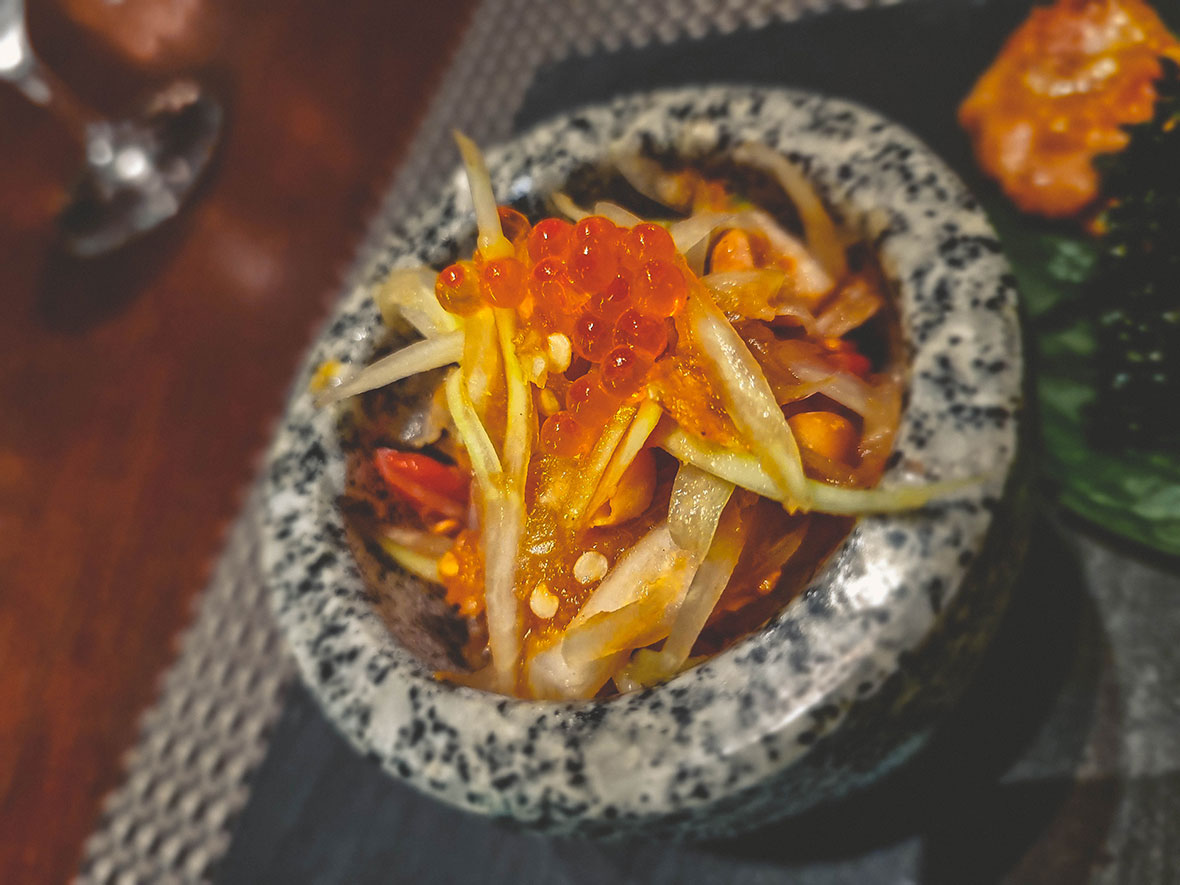
The starters begin three-fold with a savory shrimp egg sheet, minced chicken in a tart, and the memorable bird-shaped fish dumpling. Why a fish dumpling is shaped like a bird is anyone’s guess, but delicious all the same.
The first proper course, cucumber salad with salmon caviar and grilled turmeric chicken, should drive home the idea that this is traditional Thai. Yes, it has those northern Thai flavors in the chicken but also to start the meal in earnest: spice. The cucumber salad — or papaya for the cucumber averse — is a proper, old-fashioned kick in the somtam teeth. I found myself scraping the bottom of the stone mortar to get at more of the juices and salmon eggs.
Next, comes the Hokkaido scallop in coconut soup, which is a bit of a turn away from what most might consider a Thai dish, but the coconut soup is a nutty, savory concoction puting one well in mind of a sort of sort cool, refreshing satay sauce flavor.
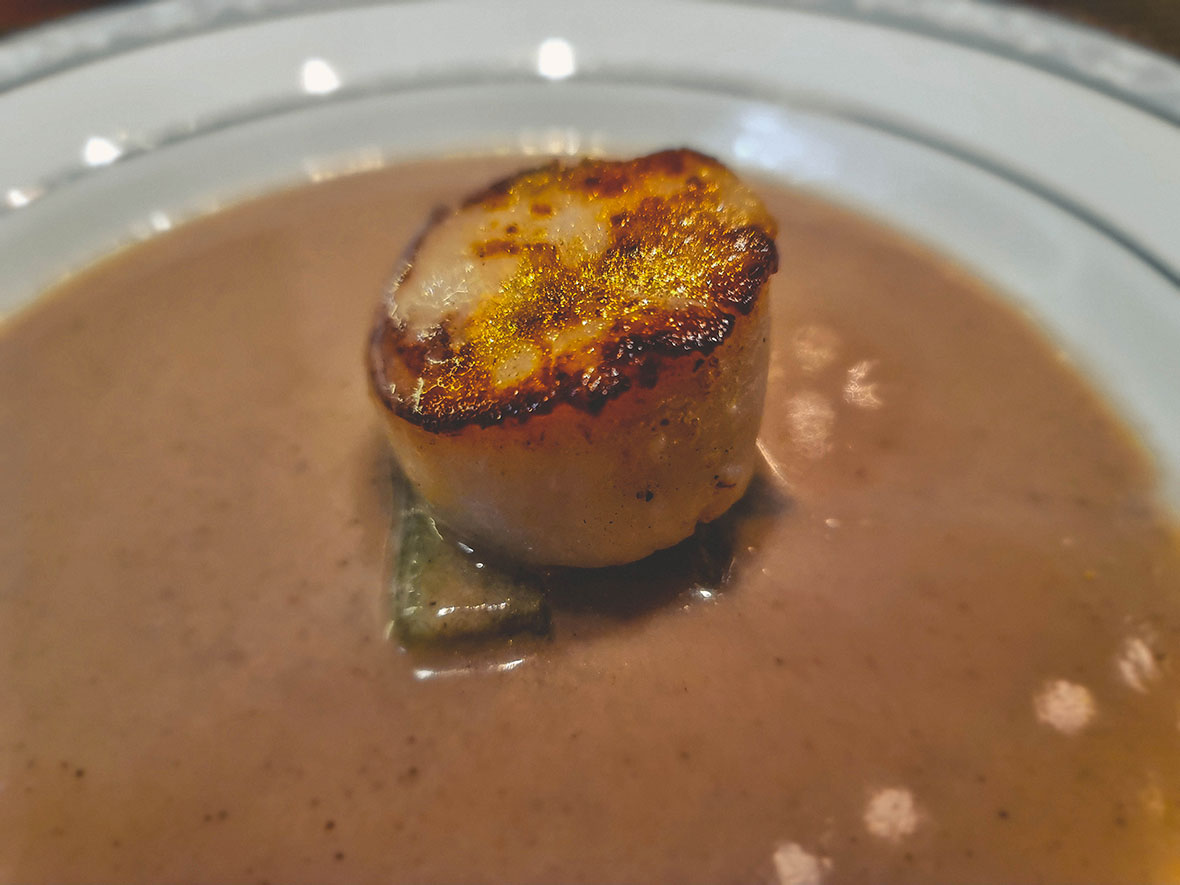
The pad thai crab meat — heavy on the meat — exuded a careful authenticity and added a DIY element to the garlic chives I found most appealing, for which there always seems too much or too little.
Similarly to the Hokkaido scallop, the antipedian Australian tenderloin, the main course, might seem a little out of place on this menu, but it is served with a hunglay sauce, making it somewhat reminiscent of the northern flavors of a gaeng hunglay.
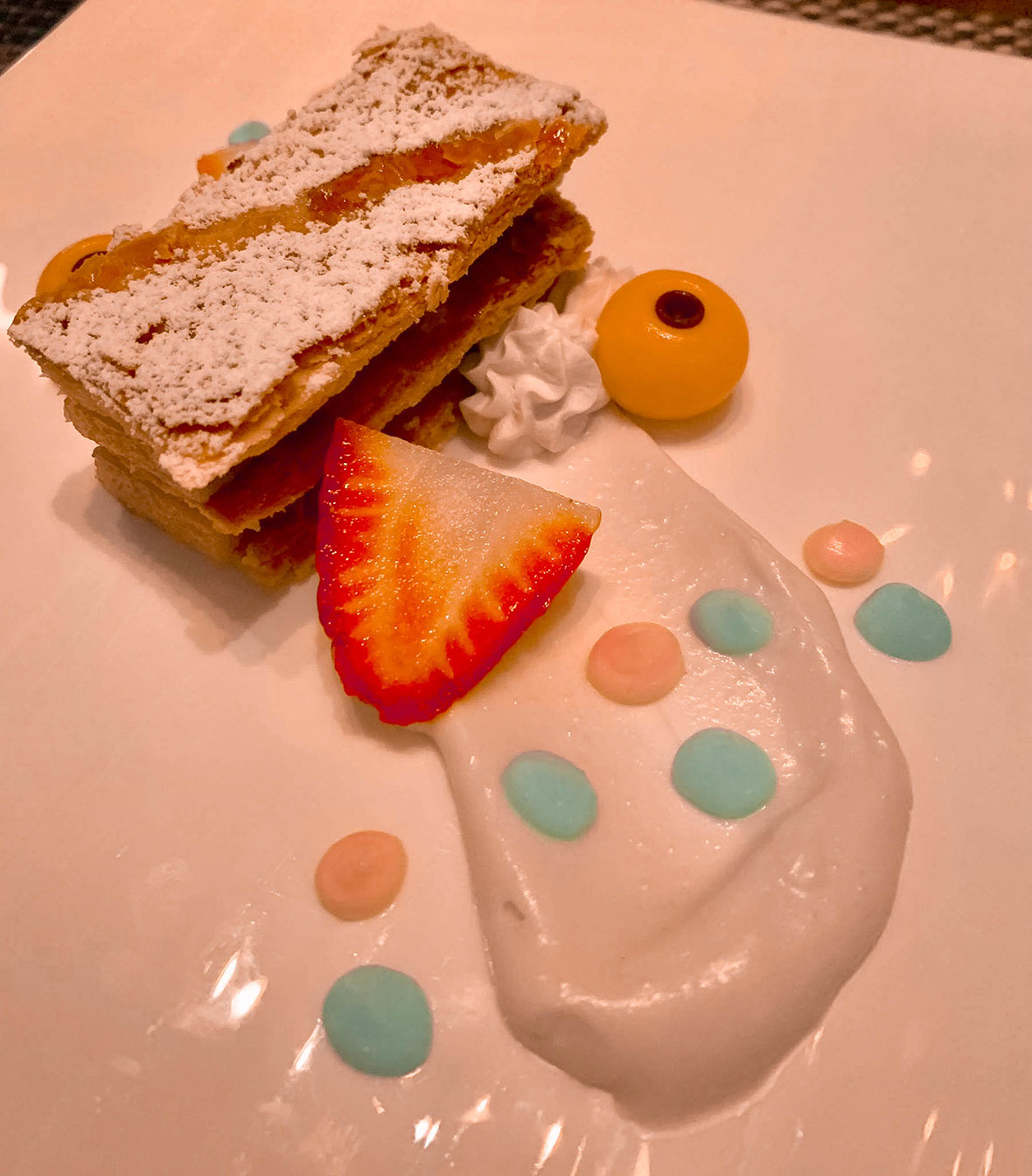
Now for the average Thai diner, the desert is where Saneh Jaan really shines, but beware, these are flavors that might be a little alien to a western palate. Most in Southeast Asia, indeed most in the world, consider western style desserts too sweet, and it’s true that the overreliance on the saccharine sacrifices complexity. Still, the pandan mille-feuille manages to pull off both preferences, for a crunchy, flavorful (near) end to the meal.
Lastly, to mull over the extremely filling feast is a selection of handheld desserts, with notes of sandalwood, mung bean and fruit, the eponymous signature of Saneh Jaan itself.
The only thing missing from Saneh Jaan was the atmosphere of fine dining that should come with one of the most celebrated restaurants in Bangkok. Soon, that too shall return.

